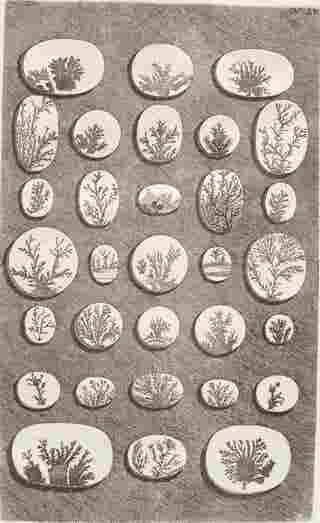Maria Sibylla Merian
Maria Sibylla Merian was born in Frankfurt am Main, Germany on April 4, 1647. Her father, engraver and topographical artist Matthaeus Merian the Elder, died when she was three, but the family moved in artistic circles and when her mother remarried, it was to another artist. Jacob Marell, her step-father, taught her engraving and painting. Her interest in science was already evident at the age of 13 when she cultivated silkworms and made observations on their lifecycle.
At 22, she married artist Johann Andreas Graff and moved to Nuremberg where she continued to pursue her career as a professional artist, teaching, painting, and publishing. From 1675 to 1680 her first work Neues Blumenbuch was self-published and marketed in three volumes of 12 drawings each. The illustrations were intended to be used as models for painting and embroidery patterns.
Although by 1685 Merian’s career was flourishing, she left Nuremberg and moved with her daughters and her widowed mother to join a Labadist religious commune at Castle Waltha, Friesland, eventually receiving a divorce from Graff. It was at Castle Waltha where she first saw specimens of plants and insects from Surinam. Six years later, she left Castle Waltha, disagreeing with the Labadist principle of mortification of the flesh, and moved to Amsterdam, where she began supporting herself once again by her artistic skills, but was immediately recognized for her research methods. She associated with the leading natural scientists: botanist Caspar Commelin, medical professional Frederik Ruysch, city officials Nicolaas Witsen and Jonas Witsen. She was friends with artist Agnes Block and taught painting to the reknowned still-life artist Rachel Ruysch, Frederik’s daughter.
In July 1699, with the support of the Witsens and others, she drew up her will and sailed for Surinam with her youngest daughter, Dorothea. With her she brought painting materials and prepared parchment. She was astounded by the abundance of life in the jungles of Surinam. Here she continued her studies in metamorphoses, creating her most important work: the paintings that she later translated into copperplate engravings of reptiles, amphibians, insects and the tropical plants that were their hosts. She left Surinam after 21 months, complaining of the heat. She had contracted malaria which left her permanently in poor health.
Back among her scientific circle in Amsterdam, physically and financially exhausted, she began the work of turning her paintings into copperplates for her Metamorphosis Insectorum Surinamensium. With resources depleted and the publication of her greatest work still ahead of her, Merian was approached by supporters of the naturalist Georg Everard Rumpf. By the time he was 42 years old Rumpf was blind from glaucoma, but he continued to produce detailed manuscripts of his observations. Merian accepted the commission to ghost illustrate Georg Rumpf’s posthumous D'Amboinsche Rariteitkamer. She also raised funds by selling watercolors and specimens from her Surinam trip. There was such an avid desire for these curiosities by the general public that together with her daughter Joanna and Joanna’s husband, she established a transatlantic import business. With this support, the first 60 plates of the Metamorphosis Insectorum Surinamensium were published in a Dutch edition in 1705, followed by editions in Latin and French. These were eventually to be followed by a 1719 posthumous edition of 72 plates.
Merian came from the tradition of flower painting, but she was foremost a scientist: she was one of the first to study metamorphosis and one of the first to publish images of tropical plants, the first to understand and describe the relationships between animals along with their host plants. The work produced from her Surinam voyage was remarkably influential. Linnaeus cited her more than a hundred times in his Species Plantarum and Systema Naturae. Two plant genera have been named for her. Many species have been named for her, including one flower by Alexander von Humboldt who had his portrait painted with it.

